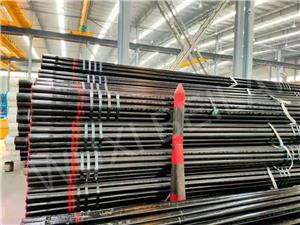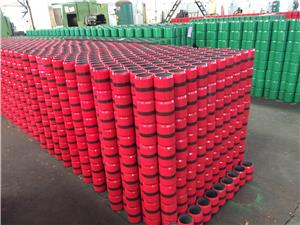Finished product performance testing in vacuum insulated tube production
Vacuum insulated tubes play an important insulation role in various industrial applications. To ensure their efficient performance in actual use, finished product performance testing during the production process is crucial. The following are common finished product performance testing methods and standards in the production of vacuum insulated tubes.
1. Vacuum degree test:
Vacuum degree is one of the most basic performance indicators of vacuum insulated tubes. By using specialized vacuum testing instruments, manufacturers can create a certain vacuum inside the product and then measure and record this vacuum. Test results are usually expressed in units such as Pascal (Pa) or millibars (mbar), and the vacuum degree requirements are set based on product design and industry standards.
2. Withstand voltage test:
Voltage resistance is one of the key properties of vacuum insulated tubes in dealing with high-voltage environments. In the withstand voltage test, the manufacturer applies a predetermined pressure to the inside of the vacuum insulated tube to observe whether leakage or damage occurs. Test results are usually expressed in units such as Pascal (Pa) or MegaPascal (MPa), and the requirements for pressure resistance performance are set based on product design and industry standards.
3. Thermal conductivity test:
Thermal conductivity testing is used to measure the thermal insulation properties of vacuum insulated tubes. Using a special thermal conductivity testing instrument, heat and cold sources are applied to both sides of the vacuum insulated tube to measure the thermal conductivity performance. Test results are usually expressed in units such as watts per meter per kelvin (W/mK), and thermal conductivity requirements are set based on product design and industry standards.
4. Tightness test:
The tightness test is one of the key tests to ensure that there is no leakage inside the vacuum insulated tube. By creating a certain degree of vacuum in the pipe, then sealing the pipe, and observing changes in the degree of vacuum over a period of time, we ensure that the product has good sealing performance.
5. Appearance inspection:
The appearance inspection mainly focuses on the quality of the outer surface of the vacuum insulated tube. Through visual inspection, manufacturers can detect the presence of surface defects such as cracks, dents, rust, etc. The standards for appearance inspection are usually set by product design and industry standards.
6. Corrosion resistance test:
Corrosion resistance testing is used to evaluate the performance of vacuum insulated tubes in corrosive environments. Test the corrosion resistance of pipes by exposing them to simulated or actual corrosive environments. The test results are used to ensure that the product has sufficient stability in corrosive environments.
7. Performance stability test:
The performance stability test is designed to evaluate the performance stability of vacuum insulated tubes over long periods of use. By conducting long-term tests under certain conditions, observe whether its performance can be maintained stably. Test results help predict product life and performance in real-world applications.




